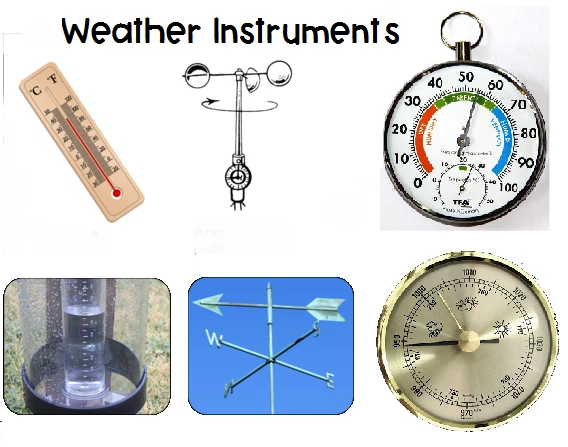
# Weather Gauges and Instruments for Accurate Meteorological Measurements
## Introduction to Weather Gauges and Instruments
Weather gauges and instruments are essential tools for meteorologists, researchers, and weather enthusiasts alike. These devices provide accurate measurements of various atmospheric conditions, enabling us to understand and predict weather patterns effectively. From simple thermometers to sophisticated weather stations, these instruments play a crucial role in our daily lives and scientific research.
## Common Types of Weather Instruments
### Thermometers
Thermometers measure air temperature, one of the most fundamental weather parameters. Modern digital thermometers provide precise readings, while traditional mercury or alcohol thermometers remain reliable options.
### Barometers
Barometers measure atmospheric pressure, which helps in forecasting weather changes. Mercury barometers and aneroid barometers are the two primary types used in meteorological observations.
### Hygrometers
These instruments measure humidity levels in the air. Psychrometers (wet-and-dry bulb thermometers) and electronic hygrometers are commonly used to determine relative humidity.
### Anemometers
Anemometers measure wind speed and direction. Cup anemometers, vane anemometers, and ultrasonic anemometers are widely used in weather stations and aviation applications.
### Rain Gauges
Rain gauges collect and measure precipitation. Standard rain gauges, tipping bucket rain gauges, and weighing rain gauges are the most common types used for accurate rainfall measurement.
## Advanced Weather Measurement Systems
Modern weather stations combine multiple instruments into integrated systems that can measure various parameters simultaneously. These automated weather stations often include:
– Temperature sensors
– Humidity sensors
– Barometric pressure sensors
– Wind speed and direction sensors
– Precipitation measurement devices
– Solar radiation sensors
## Importance of Accurate Weather Measurements
Accurate meteorological measurements are crucial for:
1. Weather forecasting and warnings
2. Climate change research
3. Agricultural planning
4. Aviation safety
5. Marine navigation
6. Construction and engineering projects
7. Emergency preparedness
## Choosing the Right Weather Instruments
When selecting weather gauges and instruments, consider:
– Measurement accuracy requirements
– Environmental conditions
– Maintenance needs
– Data recording capabilities
– Budget constraints
– Installation requirements
## Maintenance and Calibration
Regular maintenance and calibration are essential for ensuring the accuracy of weather instruments. This includes:
– Cleaning sensors and components
– Checking for damage or wear
– Comparing readings with reference instruments
– Following manufacturer’s calibration procedures
– Documenting maintenance activities
## Future of Weather Measurement Technology
Emerging technologies in weather instrumentation include:
– Miniaturized sensors for portable applications
– Wireless and IoT-enabled weather stations
– Advanced remote sensing technologies
– AI-powered data analysis tools
– Improved durability for extreme conditions
As technology advances, weather gauges and instruments continue to become more precise, reliable, and accessible, contributing to better understanding and prediction of our planet’s atmospheric conditions.
Keyword: weather gauges instruments
0 thoughts on “Weather Gauges and Instruments for Accurate Meteorological Measurements”